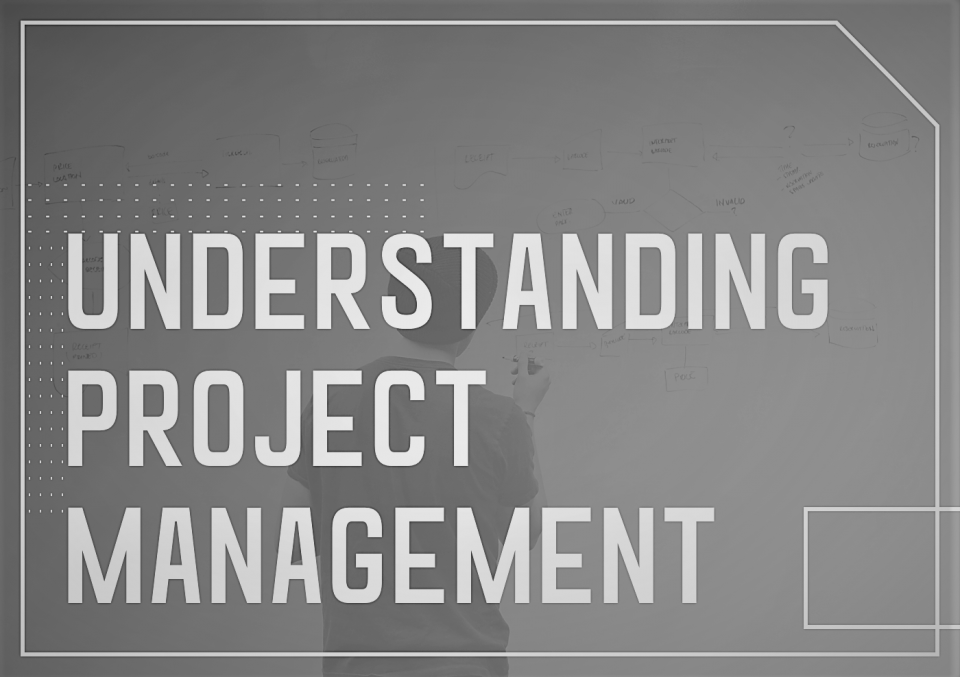The take off of the first ever Boeing 747 Jumbo Jet, the launch of the World Wide Web, the birth of the first IVF baby, Apollo 11’s putting the first man in space, or perhaps it is the building of Dubai’s Burj Khalifa (the tallest structural standing building in the world with 160 floors; it was built by 10,000 people and only a single death casualty), these are the most ground breaking projects of our generation. But beyond these dramatic and life changing projects, we have personal everyday projects we are either proud of or have failed in too. So, whether it’s that exam, your wedding, that board presentation, your mere postgrad, your company finally registered and incorporated, a deal lost or the contract delivered and signed off on, these are all projects. In all projects, if you knew better, you’d do better. A project is any temporary endeavour that requires inputs to yield an output within a constraint. The practice of leading the work of a team to achieve goals at a specified time is known as project management.

Although project management and operations management are often used interchangeably, these two concepts differ. The former is concerned with distinct events which often births new products, e.g, construction of a bridge, a wedding or even life. On the other hand, operations management is centred on similar repetitive events, e.g, printing of bank tellers, freight forwarding, and customer care. Another distinction between projects and operations is the level of skills required. A standard project requires a wide variety of skills. However, an operation requires limited skills due to the repetitive nature of events.
A program is a collection of related projects that contribute to a similar outcome. For instance, the construction of an airport will be considered as a program due to the multiple projects involved. A portfolio is a group of programs and/or projects that may be unrelated. While a project is the subset of a program, a portfolio is a superset of a program.
A comprehensive understanding of project management is required for any organization’s success. However no matter how good an intention may be, when being executed, a poor project management may dissipate it. The following are the process of project management, with greater emphasis on the first two phases:
- Initiating
- Planning
- Executing
- Monitoring and Controlling
- Closing and Delivery
INITIATION
1.Initiating: This is performed to define a new project or a new phase of an existing project. It is also used to give authorisation to the project manager. This phase is very crucial as it is the bedrock of the whole project. One essential feature of this phase is the initial meetings and the Project Initiation Documentation (PID). A PID can be likened to a charter document or the business plan of an organization. It provides a reference point throughout the project for both the client and the project team. At the beginning of any project, it is imperative for the project manager to authenticate his control of such project. This is contained in a project charter, stating the project client as well as the project team. A project charter is essential to avoid duplication and misinterpretation of roles and authority.
Also, the initiating phase features preliminary meetings with major stakeholders of the project. This helps to concretely define the scope of the project. Resolutions from the meetings are pivotal to the Planning phase of a project management.
PLANNING
2.Planning: Here, the project team develops the project management plan and project documents that will be used to carry out the project. Here, the project manager also plans the capabilities, inputs, tools, techniques and expected outlook it needs. These variables usually cut across different knowledge areas. These knowledge areas include integration management, scope management, time management, cost management, quality management, human resource management, risk management, stakeholder management, communication management and even procurement management. It is imperative for a project manager to understand these knowledge areas, plan each accordingly and then integrate it to arrive at a successful plan. To aid this process, all knowledge areas and their elements relative to the project are planned. But it must be progressively elaborated from the major parts broken down into the bits. But each bit must be interrelated. For this, a project manager can use a Work Breakdown Structure (WBS). The WBS identifies various areas of importance and their bits interdependently. As opposed to the Gantt chart, which deals with time control, the WBS focuses on integration and scope control.
Another fundamental feature of the Planning Phase after defining your WBS is budgeting. Project budgeting has to do with creating a financial plan on how to expend the funds allocated for a project. To get a budget, you must first define the cost elements. There are three methods of designing a project budget:
- Analogous Budgeting: This has to do with reaching a project budget based on previous similar projects. A project manager can draft a budget because he has recurrently carried out similar projects. This approach is historical in nature. It may not be suitable due to economic and situational differences.
- Top-bottom Budgeting: Here, the project owner indicates his budget which the project manager is expected to execute with. The budget is determined by the client and then allotted among different cost elements. A project manager is constrained to the budget of the client. This approach may also lead to a poor project execution if the allotted fund is too low. On the other hand, it could lead to wastages of resources if the budget is too high.
- Bottom-up Budgeting: The project manager ascertains the budget of different cost elements and sums it up to form the total budget. Budgeting starts from the bottom and is channelled up to the aggregate cost. This approach encourages smooth execution of the project, thereby reducing the likelihood of project failure.
EXECUTING
As a proactive plan for possible unforeseen circumstances, a contingency fee is added to the total budget. Contingencies differ for various projects, hence the need to make provisions for them. A contingency reserve is the amount set apart for contingencies. An aggregate of the total budget and contingency reserve makes up the invoice to be sent to the client. However, contingency fees are meant to be refunded when there is no risk resulting from the use of that fund.
- Executing: This is the phase where the plans designed in the Planning phase are executed. This phase is also critical to avoid discrepancies between expectation and performance.
MONITORING & CONTROL
- Monitoring and Control: The project manager is required to follow up with the execution process. This is important to ensure strict compliance by the project team. Where any glitch is identified, the project manager is expected to find a remedy. This helps the project to be delivered in due time with a good quality.
CLOSING & DELIVERY
- Closing and Delivery: This is the final phase where the project is presented to the client. At this point, the project charter becomes invalid except if otherwise stated. Oftentimes, client’s feedback is necessary for better service delivery.

What makes a project successful is really the need for the project, its benefit over cost, and how the project is initiated, planned, executed, monitored and controlled within the triple constraints of time, scope and cost. The level of efficiency that the project achieved to reach the project objectives defines project management success. Efficiency is related to how the project manages its limited resources to meet the goals while building good relationships with internal and external stakeholders. A project is considered successful when the product it produces is of great value and it was delivered within the predefined time, within budget and scope. When this happens with minimal risk yet maximum quality possible with key stakeholders carried along, it becomes a project manager’s delight. Hexavia as a strategy, business development and project management firm looks forward to working with you.
—

“….none of us is as smart as all of us.. we can pull this off “
Eizu, ©Hexavia!
Strategy. Business StartUps and Corporate Restructuring Consulting
T: 08035202891





1 comment
Very excellent info can be found on weblog.Leadership